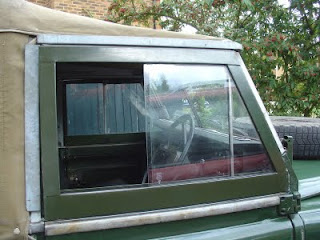Does one require the additional power it generates or can a 2nd battery manage. In this blog, I provide an overview of the benefits and disadvantages of adding a solar power system to your overland vehicle.
A quick story - BigSky Adventures, Mali, 2005
A quick story about why solar power has a benefit to play. March 2005 we were camping in Mali, on the banks of the Chutes de Gouina falls.
The mid March temperatures were reaching 45deg c. Extremely hot dry heat. We opted to stay for a few days chilling out in the water and exploring the falls. Our Defender was equipped with a dual battery config. The deep cycle secondary battery powered all auxiliaries and most importantly our Engel fridge.
The fridge was mounted at the rear of the Defender with easy access to the rear door.
The heat was excessive so the interior of the Landy crept up to high 40s. Even with the fridge turned to its lowest setting, the heat was causing it to constantly attempt to cool. This resulted in the auxiliary battery draining in 8 hours. If we had a solar panel, the battery drain would have been neutralized. Now, that would have been beneficial!
A quick overview of Solar Power:
Wikipedia describes as follows: Solar Panels use light energy (photons) from the sun to generate electricity through photovoltaic effect (this is the photo-electric effect). The majority of modules use wafer-based crystalline silicon cells or a thin-film cell based on cadmium telluride or silicon. Crystalline silicon, which is commonly used in the wafer form in photovoltaic (PV) modules, is derived from silicon, a commonly used semi-conductor.
Adding a Solar Panel to your Overland Vehicle:
The quick answer to this question is as follows:
- Mount the panel on the roofrack - ideally with removable mounts so that you can position the panel in the sun once parked in the shade.
- Connect the wires to the Solar Charge Controller
- Connect the Solar Charge Controller to your 2nd battery.
That's as easy as I think it gets. Perhaps an expert might be needed to neaten up the wiring loom :-)
The Clear Benefits
The benefits include:
- Additional battery capacity when remote camping
- Vehicle Alternator not needing to fully charge the remote battery
- Freedom of mind - i.e. being relaxed and knowing that your battery will be fully charged
Whilst reviewing the advantages for Solar power during the preparation for our BigSky Adventures overland trip, I opted a single reason why I would not fit one - The Expense.
This is still the number one reason why all overlanders don't have this handy feature fitted to the vehicle.
In the UK, I would recommend Sunshine Solar. The products you need are:
The cost for the kit above is roughly £460. Money well worth spent!
In South Africa, the best advice and products are provided by Renzo at BushPower.

























